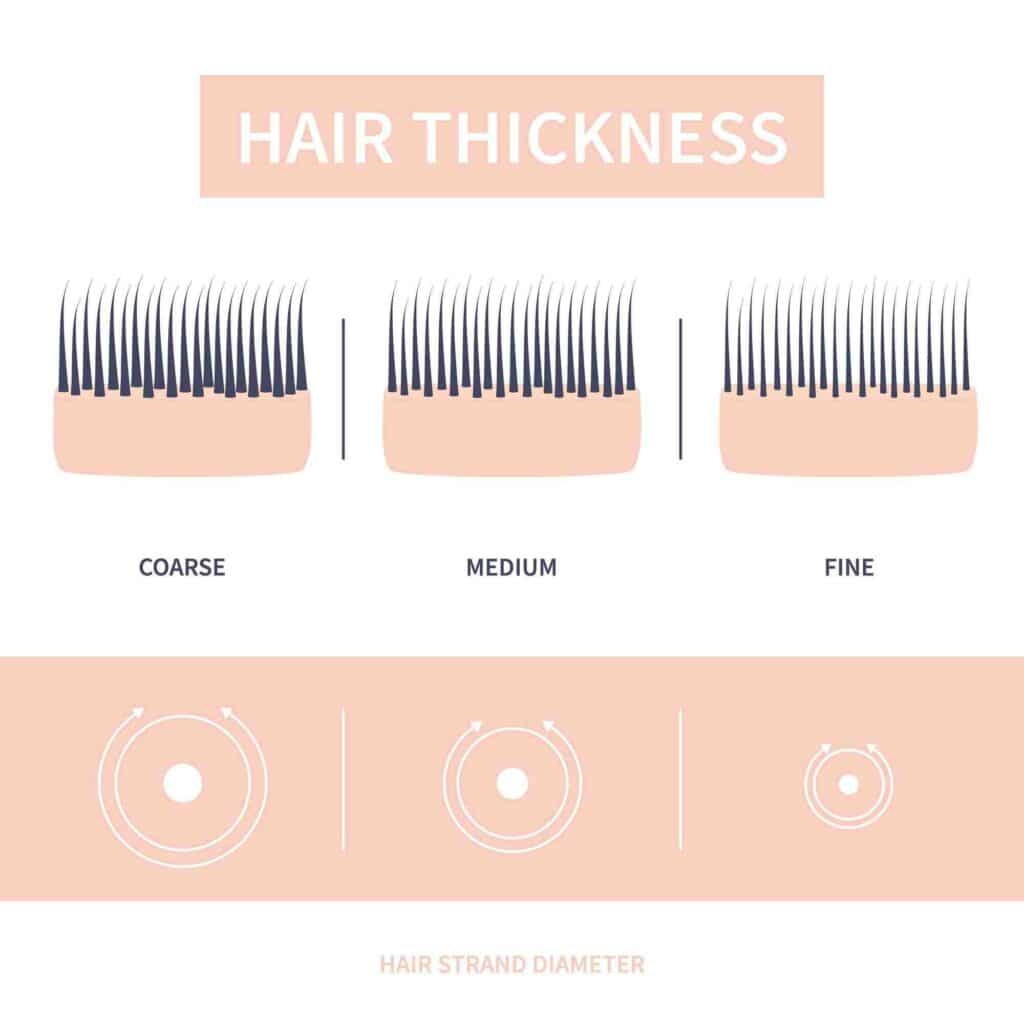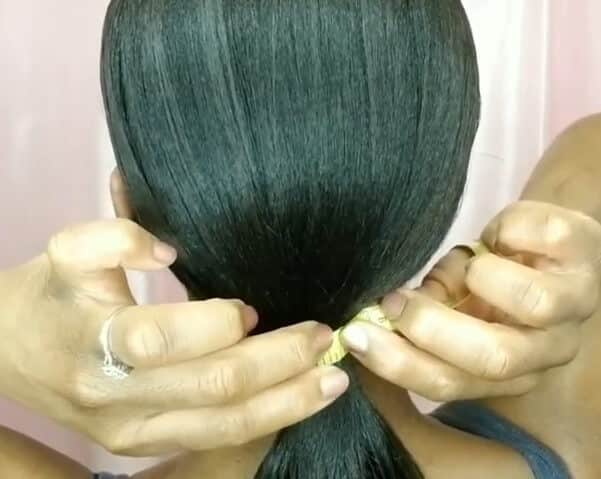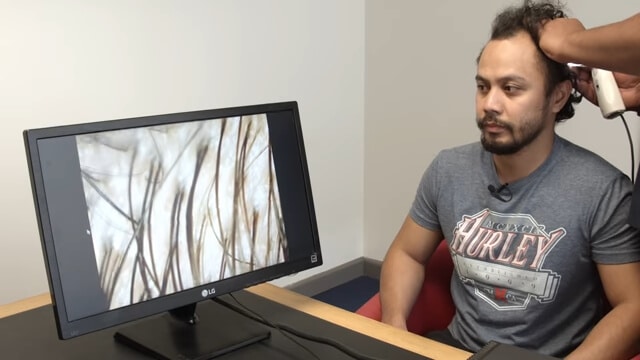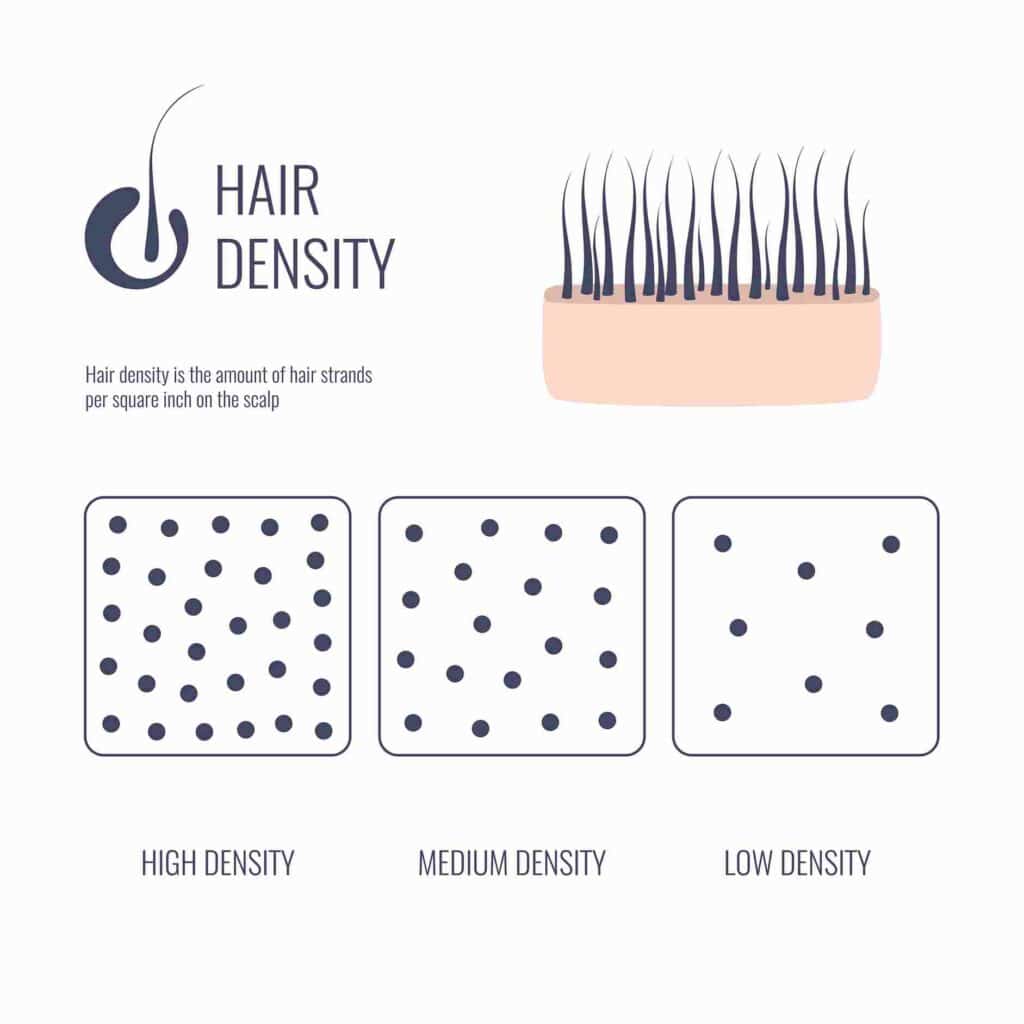Want to learn what is hair density? In this article I've explained hair density tests and how to increase hair density and also discussed if it's possible to increase hair density at all!
Hair density is one of the aspects of hair that is hardly ever spoken of, but is important that you should know about it. But why is it so important?
Well, if you’ve ever wondered why the hair on your head seems so lacking, while some others have such voluminous hair, then maybe you’ve not yet been introduced to the aspect called ‘Hair Density’.
So, what exactly is hair density? Is it the same as hair thickness? How do I measure my hair density? Can hair density be increased?
Well, this article has all the answers that you need and everything that you require to know about hair density. Check out the details below!
Related: Thick Hair Vs. Thin Hair
What is hair density?
Hair density refers to the number of individual strands that are found in every square inch of a person’s scalp.
So, this means that hair density talks about the hair strands on a collective basis – thus referring to how many strands of hair a person has on their head.
An average adult has around 2,200 hair strands in every square inch on their head and this is usually called as normal or medium hair density.
For those who have lesser than the average number of hair strands per square inch of the scalp, they have low hair density.
When a person has low hair density, that’s when the bald patches start becoming more visible.
On the other hand, those who have above average number of hair strands on the head have high hair density. This is when people tend to have very voluminous hair.
Differences Between Hair Density and Hair Thickness
Very often people confuse hair density with hair thickness and even use these words interchangeably. Well, even though they are both aspects of hair, they are totally different.
While hair density looks at the number of hair strands one has per square inch of their scalps, hair thickness refers to the width or circumference of each individual hair strand.
This is because some people have wider hair follicles, while some others have narrower hair follicles (which determine the width or circumference of each hair strand).
So those with fine hair have a lesser hair width, while those with coarse hair have greater hair width.
Therefore, people can have low hair density with thicker hair strands, thus making their hair look thick, while some people may have both low density and fine hair strands, making their hair look scanty.
So, the hair creates the illusion of how it appears on the head and that’s how we see it.

Tests to Measure Hair Density
While measuring hair density manually is obviously not a possibility, there are a few tests to measure the approximate hair density a person has.
Apart from these tests, you can also go in for a professional test to check your hair density.
Here are a few tests you could use to measure the density of your hair:
1. The Ponytail Test

This is the easiest test you could try (but it will work only if you have long hair). All you need to do is tie your hair up into a ponytail. Then using a measuring tape, measure the circumference of your ponytail.
If the circumference of your ponytail is 2 inches, then you have low density hair. If the circumference of your ponytail is more than 4 inches, then you have high density hair. If it is in between 2 to 4 inches, then your hair is of medium or normal density.
2. The Appearance Test
This one is simple as it all lies in how your head “appears” when you look at it. It is based on the visual inspection of your head.
You will have to look at your head very carefully. If your scalp is easily visible, then your hair density is low.
If your scalp is not visible at all, then your hair density is high. If your scalp is visible, but just a little, then your hair density is medium.
3. The Professional Test

It is pretty obvious that these manual methods of hair density testing aren’t fully accurate and therefore, if you really wish to know the density of your hair, then you will have to go in for a professional test.

There is a method called the gold standard method of hair density testing which uses a technique called “Phototrichogram”. This technique uses the imaging method that measures the density of the hair.
Another professional method is by using a device called a dermatoscope, which is a handheld device that the trichologist will use to estimate the density of your hair.
Why should you know your hair density?
After garnering the fact that your hair density is low, medium or high, what do you do with that information? Does it even benefit you?
Well, yes, it does. Knowing your hair density will help you figure out what products you need to use for your hair, best ways to cut and style your hair.
It also tells you which products you shouldn’t be using for your hair and how to increase the density of your hair (for those with low hair density).
Here are some hair care tips based on your hair density
Low hair density
For those with low hair density, you could use lightweight hair creams and oils.
It is better to stay away from those hair creams, serums and oils that are heavy, because they can weigh down your hair and make it stand limp and lifeless. It will also make your hair look scantier.
You could get hairstyles like step cuts, feather cuts or layers. These hairstyles can give your hair a fuller look.

Medium hair density
Medium hair density is basically normal hair and is easier to look after. But nevertheless, your hair will not look very voluminous, even though it doesn’t look scanty.
So, to make it look voluminous, you can use dry shampoos between hair washes and root volumizing sprays to give your hair volume a boost. Most hairstyles will suit medium density hair.
High hair density
High density hair will look very voluminous and puffy at times and therefore using heavyweight hair creams, gels, butters, serums, hair oils etc, can help reduce the appearance of your hair looking puffed up.
You can go in for hairstyles like bob cuts, long layers, straight cuts, blunt cuts etc, that can give your hair volume some shape.
Ways to Increase Hair Density
1. Use of natural methods
Natural methods like hair oiling and scalp massages can be helpful in contributing to the increase of hair density.
This is because at times the hair follicles stop producing hair, while the hair fall will continue. So, this will reduce the hair density to a large extent.
Therefore, if you oil your hair, it can help strengthen the hair strands, thus reducing the loss of hair, while oil massaging the scalp can help stimulate hair growth from the dormant hair follicles by promoting sufficient blood circulation in the scalp.
2. Having the right diet
There are times when our hair follicles do not get sufficient nutrition it requires, making it become deficient and can thereby lead to hair loss and thereafter, dormancy of the hair follicles, thus leading to scanty hair.
Therefore, in order to rejuvenate the hair follicles, supplying the body with the right nutrients can help revive the hair follicles.
Hence, consuming foods rich in vitamins like vitamin C, vitamin D, vitamin B and minerals like biotin, zinc, iron etc, can help increase hair density.
3. Using the right hair care products
When you use hair care products that contain harsh chemicals, they can damage the hair and can disrupt the growth of hair right from the hair follicles.
Thus, using hair care products that can nourish the hair follicles would help increase hair density.
Use products that contain natural and nourishing ingredients, instead of using products that contain sulfates, parabens, silicones, etc.
4. Hair transplantation
The hair transplantation procedure entails hair follicles being removed from the back of one’s head and are transplanted into the areas of the head that have low density of hair.
Hair transplantation is becoming a very popular method of increasing hair density. But it is a highly expensive procedure and requires to be done by a hair transplant professional.
Also, this procedure will take one to a few sessions to complete based on how much hair is required to be transplanted and thereafter, the healing and growth process will begin for the hair to grow back as one’s normal hair.
Thus, the entire process will take a few months and could have side-effects in some rare cases.
Some of the side-effects could include infections, bleeding, loss of sensation in the hair transplanted areas, inflammation of the hair follicles, scalp pain, swelling and itching etc.
Therefore, this procedure is recommended only for those with extreme hair loss and very low hair density.
The final takeaway
If you are someone who just got introduced to this aspect of hair, then make sure to check out your hair density.
It will help you understand your hair better and provide it with better care with the use of the right products.
Always care for your hair based on your hair density and get hairstyles that match your hair density.
For those with low or medium hair density, it is essential to try out natural methods to help increase your hair’s density, before resorting to hair transplantation, which is minimally invasive but is quite extensive.
Also Read:

